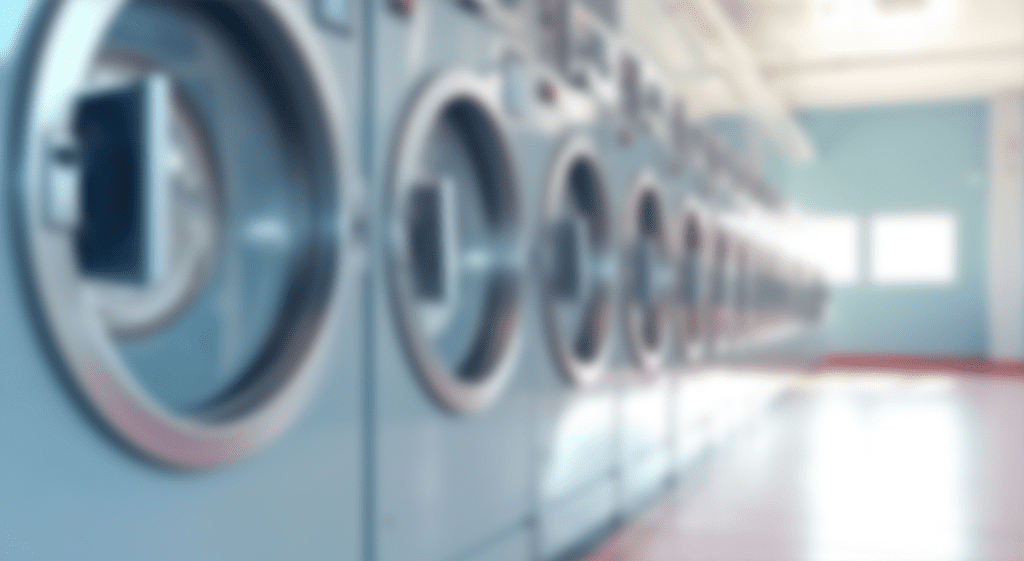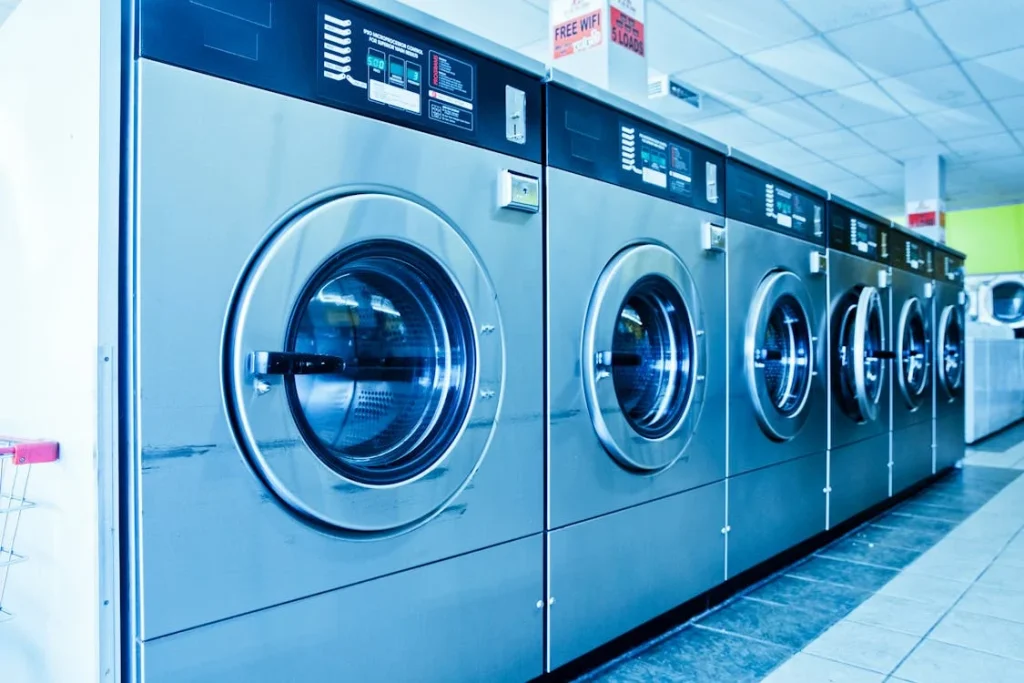Industrial washing machines are designed to handle large-scale washing tasks, often in commercial settings such as laundromats, hotels, hospitals, and large factories. These machines are built to be durable and efficient, operating under high pressures and with large volumes of laundry. But how do they work? Let’s dive into the key parts that make these machines tick.
Tabla de contenidos
- 1. Understanding the Key Parts
- 2. Common Issues and Troubleshooting
- 3. How to Maintain Industrial Washing Machine Parts
- 4. Conclusion
- 5. FAQs

1. Understanding the Key Parts
Before we explore how each part functions, it’s important to understand the core components of an industrial washing machine. These machines consist of several interconnected parts that all serve a distinct role in ensuring a smooth and efficient washing process. Each component works together to deliver the desired results in the least amount of time.
1.1. Drum
The drum is the heart of any washing machine. It’s the part where clothes are loaded and cleaned. Industrial washing machines typically feature large drums to accommodate large loads, and they rotate during washing, providing the necessary agitation to clean clothes thoroughly.
In addition to rotation, the drum is also responsible for expelling water during the rinse cycle. Without a properly functioning drum, the washing machine wouldn’t be able to clean or spin dry clothes efficiently. It’s the part that takes the most wear and tear, so it’s crucial for its longevity.
1.2. Motor
The motor is responsible for driving the drum and powering other components. Industrial washing machines use powerful motors to handle the heavy load and intense cycles. These motors come in various types, including direct-drive motors that don’t require belts and pulleys, and induction motors which are more common for traditional washers.
The motor not only powers the drum’s rotation but also influences the speed and intensity of the wash cycle, which can be adjusted based on the type of laundry. Without a powerful motor, your washing machine would struggle to wash large loads or deliver the necessary wash results.
1.3. Water Pump
Water is essential to the washing process, and the water pump controls its flow through the machine. This part ensures that the washing machine gets enough water to thoroughly wash the clothes and then pumps out dirty water during the drain cycle.
A faulty water pump can result in poor washing performance or drainage issues, leaving clothes wet or improperly cleaned. It’s an integral part that contributes to overall wash quality, ensuring water flows in and out as needed.
1.4. Transmission System
The transmission system connects the motor to the drum, transferring power to the drum for rotation. In an industrial washing machine, this system must be robust enough to handle high-speed rotations while ensuring smooth operation.
It works with belts, pulleys, and gears to allow the drum to spin in multiple directions, providing both agitation during the wash cycle and high-speed spinning for efficient drying.
1.5. Control Panel
The control panel is where all the magic happens in terms of selecting settings for the wash cycle. This part allows users to control the machine’s various functions, from wash temperature to spin speed.
In modern industrial washers, the control panel can come with advanced features such as digital screens, multiple cycle options, and even remote control for managing laundry operations. Having an intuitive control panel is vital for ease of use, especially in large commercial operations.
1.6. Inlet Valve
The inlet valve regulates the water entering the washing machine. It’s crucial for ensuring the right amount of water is used, preventing overflow or underfilling. The valve opens and closes based on the machine’s settings, making sure that the washing process is efficient.
1.7. Drain Valve
Similarly, the drain valve plays a critical role in removing water from the washing machine once the wash or rinse cycle is complete. A malfunctioning drain valve can leave excess water in the machine, potentially causing leaks or poor wash results.
1.8. Agitator
The agitator is a crucial component in ensuring clothes get clean. It creates motion within the drum, helping to scrub the laundry and release dirt. In some industrial washing machines, there may be multiple agitators or rotating drum mechanisms that create more intense agitation.
Without an effective agitator, the washing machine would not clean clothes thoroughly or evenly. The more powerful the agitator, the more effective the cleaning action.
1.9. Suspension System
The suspension system helps keep the washing machine steady during operation, absorbing any vibrations that might otherwise cause noise or machine damage. This system helps the washing machine remain balanced, even during high-speed spins, preventing excessive shaking.
A well-maintained suspension system helps extend the lifespan of your machine and ensures it runs quietly and smoothly.
1.10. Heating Element
Some industrial washers have a built-in heating element that heats water for wash cycles. This feature is especially important in facilities that require hot water for sanitizing laundry, such as hospitals. The heating element ensures that the water reaches the necessary temperature for optimal cleaning.
1.11. Belts and Pulleys
Belts and pulleys are often used in traditional washing machines to transfer power from the motor to the drum. These components are essential for ensuring that the motor’s power is efficiently transferred to the parts that need to rotate or agitate.
Over time, belts and pulleys can wear out, requiring maintenance to keep the machine running smoothly.
1.12. Seals and Gaskets
Seals and gaskets are used to prevent water from leaking out of the washing machine during operation. These parts are crucial for maintaining the efficiency of the machine, preventing water damage to the surrounding area.
Regular inspection of seals and gaskets is important to ensure they’re intact and performing their job well.
1.13. Bearings and Shaft
Bearings and shafts are located within the motor and drum assembly. They ensure that the drum rotates smoothly without resistance. These parts are key to the machine’s efficiency, reducing friction and wear.
If bearings or shafts become damaged, the machine can experience issues like loud noises or difficulty in rotation.
1.14. Safety Features
Industrial washing machines come with a variety of safety features designed to prevent accidents. These include door locks, emergency stop buttons, and sensors that detect imbalances or malfunctions. These features ensure that the machine operates safely, especially in high-volume or high-speed environments.
2. Common Issues and Troubleshooting
While industrial washing machines are built to last, they’re not immune to issues. Some common problems include motor failure, drum issues, water pump malfunctions, and problems with the control panel. Troubleshooting involves inspecting the machine’s components for any obvious issues, checking for leaks, or testing electrical connections.
3. How to Maintain Industrial Washing Machine Parts
Maintenance is essential to prolonging the life of your industrial washing machine. Regular inspections of key parts, such as the motor, drum, and water pump, can help prevent major breakdowns. Lubricating moving parts and replacing worn components on time will ensure your machine runs efficiently.
4. Conclusion
Understanding the various parts of an industrial washing machine and their functions is key to ensuring optimal performance. From the drum to the control panel, each component plays a vital role in getting your laundry clean and dry. Regular maintenance and attention to these parts will keep your machine running efficiently for years to come.
5. FAQs
How often should I perform maintenance on my industrial washing machine? Maintenance should be conducted every 6-12 months, depending on usage and the manufacturer’s guidelines.
What are the signs that my motor is failing? Unusual noises, failure to rotate the drum, or irregular wash cycles are common signs of a motor problem.
Can I replace the agitator myself? If you’re comfortable with DIY repairs, you can replace the agitator. Otherwise, it’s best to consult a professional technician.
What should I do if the water pump is clogged? Turn off the machine, inspect the pump for blockages, and clean or replace it if necessary.
How can I prevent leaks in my washing machine? Regularly check seals and gaskets for wear and tear, and replace them if necessary.
Here are some other articles that we think might interest you:
Environmental Impact of Industrial Laundry


